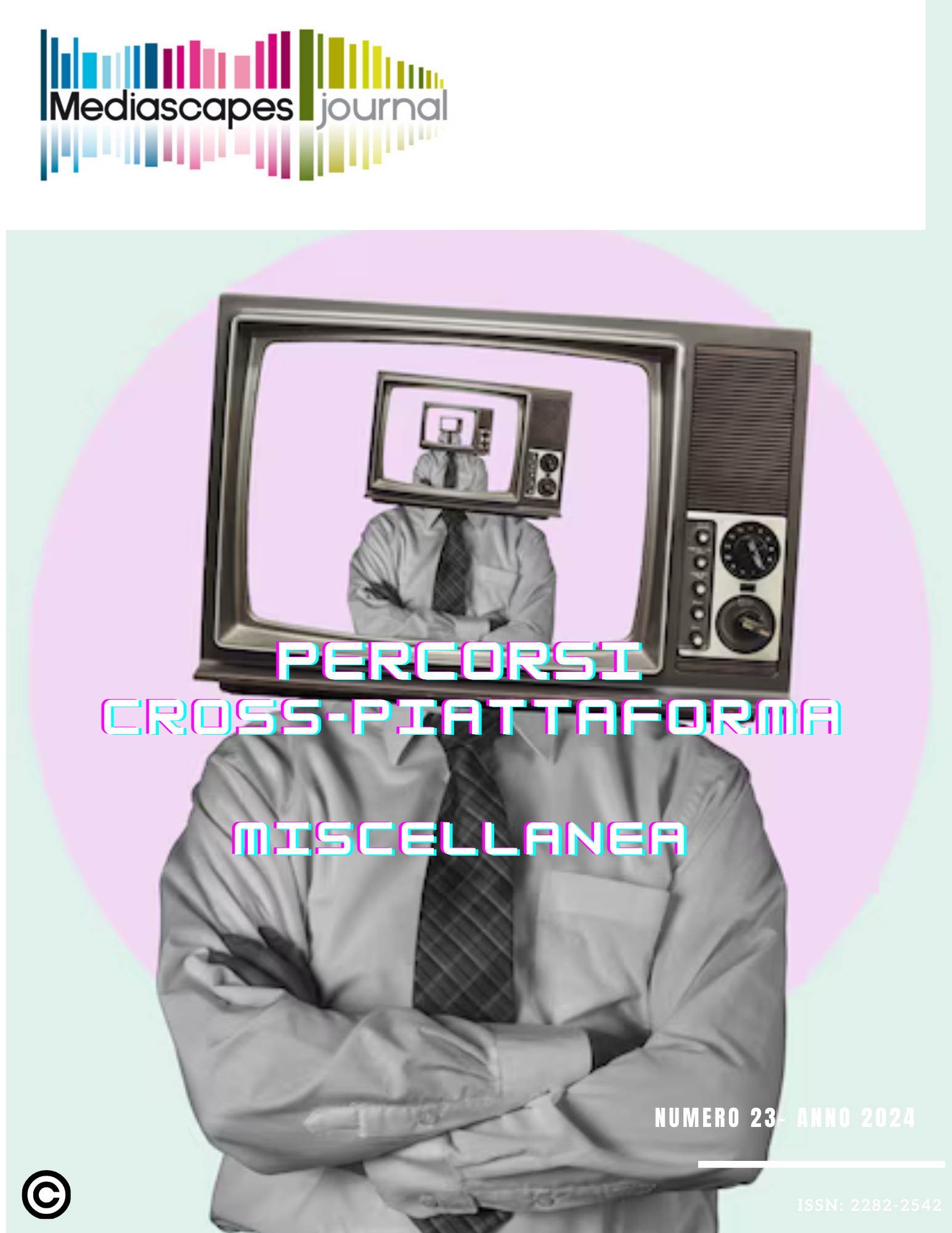Affective Polarisation
The use of emotional language by Italian news outlets on Twitter
Parole chiave:
journalism, emotion, affective polarisation, Italian news media, Italian TwittersphereAbstract
Journalism has a conflicting relationship with emotions, and thus scholars are divided in the critique about the nexus between emotions and professional ideals in journalism. While some authors argue that emotions ought to have no place in journalism, as they challenge established notions of objectivity and impartiality, others recognise their value and precise role in calling into question hidden power relations within the classic liberal journalism tradition. Yet the fast-changing digital media environment in which news media organisations must fight for news users’ attention on social media has redesigned mainstream news production and distribution, and made some authors proclaim an “emotional turn” in journalism (Wahl-Jorgensen & Pantti, 2021). Studies that link social media, news and emotions mainly focus on the audience-centric perspective, aiming to assess which types of emotions increase the sharing potential of news stories and virality (Al-Rawi, 2019; Hasell, 2021). These studies also focus on the differences between the uses of emotional expression by partisan and non-partisan news media, predominantly in the UK and US contexts. In this paper, we build upon Iyengar et al’s (2019) notion of “affective polarisation” to contribute to this discussion by extending the investigation to the Italian news media and Twittersphere. Differently from the liberal journalism tradition, the Italian media system is representative of the Polarised Pluralist Model or Mediterranean that is considered to be strongly politicised and exhibits significant levels of parallelism (Hallin & Mancini, 2004; Papathanassopoulos, Giannouli & Archontaki, 2023). Methodologically, we deploy machine learning techniques for sentiment and emotion analysis to almost half million tweets retrieved from the pages of eight Italian news outlets on Twitter (recently rebranded as ‘X’). Namely, Il Fatto Quotidiano, Corriere della Sera, Il Post, Fanpage, La Gazzetta dello Sport, Il Sole 24 Ore, La Repubblica, HuffPost Italia. This aims to address a twofold research question that asks: How do different types of news outlets use emotional valence and language in tweets? Which types of emotions trigger more engagement with news users? We also hypothesise that the more partisan a newspaper is, the more it uses negative valence and language, in addition to speculating about news engagement with negative posts. The findings open up new avenues for further investigations about the interplay between partisan media and emotion, alongside journalists’ intentionality and strategies for crafting the affective composition of news content.
##submission.downloads##
Pubblicato
Come citare
Fascicolo
Sezione
Licenza

TQuesto lavoro è fornito con la licenza Creative Commons Attribuzione 4.0 Internazionale.
Gli autori che pubblicano su questa rivista accettano le seguenti condizioni:
- Gli autori mantengono i diritti sulla loro opera e cedono alla rivista il diritto di prima pubblicazione dell'opera, contemporaneamente licenziata sotto una Licenza Creative Commons - Attribuzione che permette ad altri di condividere l'opera indicando la paternità intellettuale e la prima pubblicazione su questa rivista.
- Gli autori possono aderire ad altri accordi di licenza non esclusiva per la distribuzione della versione dell'opera pubblicata (es. depositarla in un archivio istituzionale o pubblicarla in una monografia), a patto di indicare che la prima pubblicazione è avvenuta su questa rivista.
- Gli autori possono diffondere la loro opera online (es. in repository istituzionali o nel loro sito web) prima e durante il processo di submission, poiché può portare a scambi produttivi e aumentare le citazioni dell'opera pubblicata (Vedi The Effect of Open Access).


